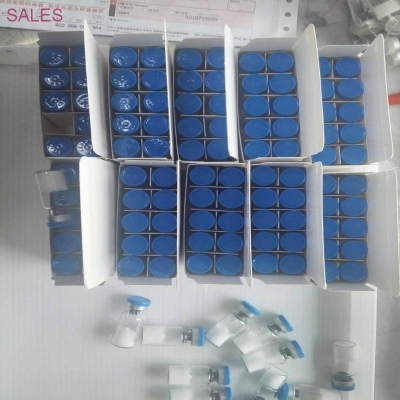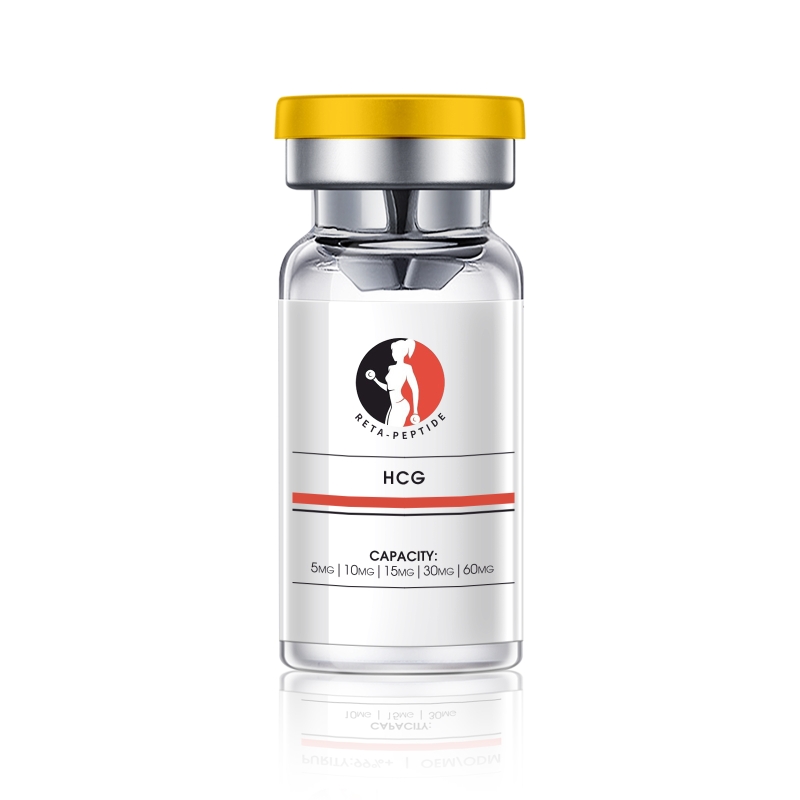-
Categories
-
Pharmaceutical Intermediates
-
Active Pharmaceutical Ingredients
-
Food Additives
- Industrial Coatings
- Agrochemicals
- Dyes and Pigments
- Surfactant
- Flavors and Fragrances
- Chemical Reagents
- Catalyst and Auxiliary
- Natural Products
- Inorganic Chemistry
-
Organic Chemistry
-
Biochemical Engineering
- Analytical Chemistry
-
Cosmetic Ingredient
- Water Treatment Chemical
-
Pharmaceutical Intermediates
Promotion
ECHEMI Mall
Wholesale
Weekly Price
Exhibition
News
-
Trade Service
On October 8, 2022, China's National Medical Products Administration (NMPA) approved the launch
of the world's first (first-in-class) glucokinase activator (GKA) huatangin (dologagliatin tablets, dorzagliatin, HMS5552) led by Hua Medicine.
Huatangning has been approved for two indications, namely the treatment of untreated type 2 diabetes patients with drugs alone, or the combination with metformin alone for the treatment of type 2 diabetes mellitus
in adults when metformin alone has poor glycemic control.
[1]
Figure 1 The NMPA approved the marketing of dopagliatin tablets
1.
Overview of diabetes in the world and China
Overview of diabetes in the world and China
Diabetes mellitus is a metabolic disorder syndrome
characterized by hyperglycemia due to defects in insulin secretion and/or inadequate insulin action.
According to data released by the International Diabetes Federation (IDF), the number of adult diabetics worldwide reached 537 million in 2021, and another 240 million people are in high-risk groups, an increase of 74 million diabetics compared to 2019, an increase of 16%.
[2]
In 2021, the number of diabetics in China reached 140 million, and in the past 10 years (2011~2021), the number of diabetics in China has increased from 90 million to 140 million, an increase of 56%, of which about 72.
83 million patients have not been diagnosed, the proportion is as high as 51.
7%.
Figure 2 Global diabetes map 2021
Second, the current treatment of type II diabetes is inadequate
Second, the current treatment of type II diabetes is inadequate Diabetes is divided into type I diabetes, type II diabetes mellitus (T2DM), gestational diabetes, and special types of diabetes, of which more than 90% of diabetic patients belong to type II diabetes
.
At present, the drugs used for T2DM to reduce glucose mainly include metformin, insulin, sulfonylureas, thiazolidinones, GLP-1, DPPIV inhibitors, α-glycosidase inhibitors, SGLT2 inhibitors, which are used alone or in combination with several types of hypoglycemic drugs, but they cannot achieve long-term blood sugar control
.
Third, the advantages of dopagliatin and its structure
Third, the advantages of dopagliatin and its structure Dopagliatin is the world's first oral new drug targeting glucokinase (GK) for the treatment of type 2 diabetes mellitus independently developed by Hua Medicine for 10 years, as a new diabetes drug with a new mechanism, it has significant safety advantages, has the mechanism characteristics of improving islet function in patients with type 2 diabetes, and dopagliatin has shown unique advantages
in patients with diabetic nephropathy in clinical trials 。 Although a number of type 2 diabetes drugs have been approved, they have not yet solved the root cause of type 2 diabetes - the decline in islet β cell function, and GK is a sensor of blood glucose homeostasis, so it is expected to overcome this difficulty from the source
.
Fig.
3 Structural formula of dopagliatin[4]
IV.
Overview of the target of dopagliatin
Overview of the target of dopagliatin
1, the discovery of glucokinase (GK) GK can be traced back to 1927, Grafe and Meythaler Professor believes that glucose is a regulatory hormone of blood glucose homeostasis, and GK can sense the concentration of glucose in the body and can maintain blood glucose homeostasis
by regulating the secretion of two glycemic hormones - insulin and glucagon.
In 1968, Professor Matschinsky discovered GK in insulin-secreting Langerhans cells in obese mice, and found that it can sense changes in glucose in cells and regulate glucose metabolism according to changes in blood glucose concentration, so Professor Matschinsky proposed the concept
of GK as a "glucose sensor".
This important discovery provides a theoretical basis
for the later understanding of GK as a glucose sensor.
Professor Matschinsky is also known as the "father of glucokinase" for establishing the concept of "the core function of glucokinase in the regulation of blood glucose homeostasis"
.
Figure 4 Professor Matschinsky
In 1992, Professor Froguel first reported adolescent-onset adult diabetes mellitus (MODY) due to inactivated mutations in the GK gene, thus establishing a link between
the GK gene and hyperglycemia.
2.
GK family and its biological characteristics GK is a subtype of hexokinase (HK) family with a relative molecular mass of 50 000, also known as HK-IV.
Other subtypes of HK in the human body include HK-I, HK-II and HK-III, and the location and role of different HK distributions are also different
.
GK is mainly distributed in the liver and pancreas, as the first rate-limiting enzyme in glucose metabolism, it can catalyze the phosphorylation of glucose to glucose-6-phosphate (G-6-P) with the participation of ATP and Mg2+, and further initiate subsequent enzymatic reactions to promote the secretion of insulin and the synthesis of liver glycogen, its activity will not be inhibited by the metabolite glucose-6-phosphate, but controlled by blood glucose concentration, so it plays a very important role
in maintaining the homeostasis of blood glucose.
Fig.
5 GK is the first key enzyme for glucose metabolism in cells of core glycemic target organs
3.
The role of GK in glucose metabolism
3.
1.
GK is involved in the glucose metabolism of islet cells
When glucose concentration in the human body is elevated, glucose is transported intracellular via glucose transporter 2 (GLUT-2) and GK is activated, and GK subsequently catalyzes glucose phosphorylation to G-6-P, resulting in ATP-sensitive potassium channel closure, cell membrane depolarization, activation of Ca2+ channel, promotion of insulin release, and participation in the regulation
of blood glucose.
At the same time, GK can also regulate blood sugar by inhibiting the secretion of glucagon by cells when blood sugar
rises.
[5]
3.
2.
GK is involved in the glucose metabolism of hepatocytes
In hepatocytes, GK binds to glucokinase regulatory protein (GKRP) in an inactive ultra-open conformation and remains in an inactivated state, when the glucose concentration in vivo rises by more than 8 mmol/L, GK dissociates with GKRP and restores enzyme activity to promote the synthesis of liver glycogen and inhibit the decomposition of glycogen; Conversely, when blood glucose drops below 4 mmol/L, GK rebinds with GKRP, GK activity decreases, promotes islet cells to secrete glucagon, and promotes liver glycogen decomposition to maintain blood glucose homeostasis
.
[5]
V.
The research and development history of dopagliatin[6]
The research and development history of dopagliatin[6]
In December 2011, Dr.
Chen Li led the team to select more than 200 projects, and among the 10 candidate projects, he resolutely decided to introduce the fourth-generation glucokinase activator project that he "selected" in Roche's research and development, and HMS5552 was born
.
In September 2013, HMS5552 Phase I clinical study HMM0101 was officially launched, filling the gap of the world's first innovative drug early clinical study in China, opening a new chapter
in China-led clinical trial design.
In October 2016, the HMM0201 study was successfully completed, the clinical verification of drug developmentability was completed for the first time in China, and the new generation GKA obtained positive results
in the phase I1 trial of similar new drugs in the world for the first time.
In November 2016, Phase 1 clinical research data
was released for the first time at the first "China Pharmaceutical Innovation and Investment Conference".
In May 2017, two phase III registration clinical studies of HMS5552 were officially launched, the first pre-market confirmatory study
of the world's first innovative drug in the field of major chronic diseases led by China's clinical R&D team in China.
In June 2020, the HMM0301 registered clinical study was successfully completed
.
Hua Medicine became the first company
in the world to realize the clinical development of GKA.
In October 2020, after the MAH system audit and on-site inspection, Hua Medicine obtained the "Drug Manufacturing License" of the world's first innovative drug under research dorzagliatin issued by the Shanghai Municipal Medical Products Administration
In April 2021, Dorzagliatin's NDA application was accepted
by the Center for New Drug Evaluation (CDE) of the National Medical Products Administration (NMPA).
In October 2022, Hua Medicine announced that the world's first innovative drug developed by the company, Glucokinase Activator (GKA), Huatang Ning ® (dorzagliatin, HMS5552), has been approved
by the National Medical Products Administration of China (NMPA).
Figure 6 20 years of GKA drug development
6.
The clinical research history of dopagliatin
The clinical research history of dopagliatin
VII.
Phase III clinical research results of dopagliatin
Phase III clinical research results of dopagliatin
On May 12, 2022, the international top medical journal Nature Medicine simultaneously published two peer-reviewed papers
on the results of phase III registration clinical studies of the company's world's first diabetes drug glucokinase activator (GKA) dorzagliatin 。 The two papers demonstrate and describe in detail the clinical efficacy and safety features
of dopagliatin monotherapy (SEED study) in patients with newly diagnosed untreated type 2 diabetes mellitus and dopagliatin combined with metformin (DAWN study) in patients with type 2 diabetes who have failed metformin adequacy.
Fig.
7 SEED study of dopagliatin monotherapy
In the first article, the SEED study (seeding study), a dopagliatin monotherapy study, is a randomized, double-blind, placebo-controlled phase III registration clinical study conducted in 463 patients with T2D who are newly diagnosed without medication
.
The first 24 weeks were randomized, double-blind, placebo-controlled treatment to evaluate the primary efficacy and safety endpoints of the trial, and the second 28 weeks were the open treatment period of dopagliatin to continuously observe and evaluate the safety of
dopagliatin.
Key findings of the SEED study include:[7]
Significant and long-lasting results:
Glycated hemoglobin decreased by 1.
07% from baseline at 24 weeks, significantly better than placebo (p<0.
001)
The 24-week glycosylated hemoglobin compliance rate was 42.
5%, which was significantly higher than that in the placebo group (p<0.
001)
Significant improvement in β cell function, with an increase of 3.
28 in HOMA2-β at 24 weeks compared to placebo
The blood glucose value at 2 hours after meals at 24 weeks was significantly lower by 2.
33 mmol/L compared with the placebo group
The fasting blood glucose value at 24 weeks was significantly reduced by 0.
33 mmol/L compared with the placebo group
Glycated hemoglobin remained consistently stable and well tolerated and safe for 52 weeks:
The incidence of hypoglycemia (<3mmol/L) was <1% within 24 weeks, and there were no serious hypoglycemic events
The incidence of hypoglycemia (<3 mmol/L) was <1% within 52 weeks, and there were no serious hypoglycemic events
There were no serious drug-related adverse events for 52 weeks
Fig.
8 DAWN study of dopagliatin monotherapy
In the second article, the DAWN study (the Dawn study) is a randomized, double-blind, placebo-controlled phase III registration clinical study of dopagliatin plus metformin in patients with type 2 diabetes who have failed metformin adequacy, in 767 patients
.
The first 24 weeks were randomized, double-blind, placebo-controlled treatment periods to assess the primary efficacy and safety endpoints of the trials; The last 28 weeks is the open treatment period of dopagliatin to continuously observe and evaluate the safety of
dopagliatin.
Key findings of the DAWN study include:[8] significant efficacy and long-term persistence:
24-week glycosylated hemoglobin decreased by 1.
02% from baseline, significantly better than placebo (p<0.
0001)
The 24-week glycated hemoglobin compliance rate was 44.
4%, significantly higher than the placebo group of 10.
7% (p<0.
0001)
Significant improvement in β cell function, with an increase of 2.
43 in HOMA2-β at 24 weeks compared to placebo
The blood glucose value at 2 hours after meals at 24 weeks was significantly lower by 2.
48 mmol/L compared with the placebo group
The 24-week fasting blood glucose value was significantly reduced by 0.
38 mmol/L compared with the placebo group
Glycated hemoglobin remained stable for 52 weeks
Good tolerability and safety:
The incidence of hypoglycemia (<3mmol/L) was <1% within 24 weeks, and there were no serious hypoglycemic events
The incidence of hypoglycemia (<3 mmol/L) was <1% within 52 weeks, and there were no serious hypoglycemic events
No drug-related serious adverse events for 52 weeks
summary
summary In summary, HMS5552 is a type 2 diabetes treatment drug with a new mechanism of action, which can activate the function of GK in the human body, improve the body's sensitivity to glucose, and improve insulin secretion; At the same time, it can improve the efficiency of liver glycogen synthesis, so that the liver, muscle and fat can significantly improve
the uptake and storage capacity of glucose.
Since 1968, Professor Franz Matschinsky, the father of glucokinase, discovered the central role of GK in glucose stimulation of insulin secretion, and proposed that glucokinase is a diabetes gene and glucose sensor, many drug research and development teams around the world have successively carried out and promoted the drug research and development of glucokinase activators, experienced many drug research and development difficulties and failures, more than 50 years later, after 10 years of painstaking efforts, Hua Medicine R&D team and Chinese clinical experts have overcome difficulties.
It has greatly improved the understanding of the mechanism of glucokinase in the regulation of blood glucose homeostasis and diabetes treatment, established the world's leading scientific concept of diabetes treatment, and successfully transformed it into the research and development results of the breakthrough new drug dopagliatin, which has brought good news
to diabetics around the world.
References and Materials:
References and Materials:[1] NMPA website:
[1] NMPA website: [2] IDF Diabetes Atlas 2021:https://diabetesatlas.org/atlas/tenth-edition/ [2] IDF Diabetes Atlas 2021:https://diabetesatlas.
org/atlas/tenth-edition/
[3] Chinese Clinical Guidelines for the Prevention and Treatment of Type 2 Diabetes in the Chinese Geriatrics, Geriatric Endocrinology and Metabolism Branch of Chinese Geriatrics Medical Association, et al.
Clinical Guidelines for the Prevention and Treatment of Type 2 Diabetes in the Chinese Elderly (2022 Edition)[J].
Chinese Journal of Internal Medicine, 2022, 61(1):39.
Clinical Guidelines for the Prevention and Treatment of Type 2 Diabetes in the Chinese Elderly (2022 Edition)[J].
Chinese Journal of Internal Medicine, 2022, 61(1):39.
HU Yuxi, CHEN Yongcheng, REN Xin, et al.
Glucokinase agonist HMS5552, a new drug under development for the treatment of type 2 diabetes[J].
Journal of Clinical Pharmacotherapy, 2020, 18(6):5.
Glucokinase agonist HMS5552, a new drug under development for the treatment of type 2 diabetes[J].
Journal of Clinical Pharmacotherapy, 2020, 18(6):5.
[5] WANG Ling, SHEN Yimin, REN Yuezhong.
Role of glucokinase in regulating blood glucose homeostasis[J].
Modern and Practical Medicine, 2020(9):1025-1027.
Role of glucokinase in regulating blood glucose homeostasis[J].
Modern and Practical Medicine, 2020(9):1025-1027.
[6] Hua Medicine official website:
[6] Hua Medicine official website: [7] Dorzagliatin in drug-nave patients with type 2 diabetes: a randomized, double-blind, placebo-controlled phase 3 trial[J].Nature Medicine.
[7] Dorzagliatin in drug-nave patients with type 2 diabetes: a randomized, double-blind, placebo-controlled phase 3 trial[J].
Nature Medicine.
[8] Yang W, Zhu D, Gan S, et al.
Dorzagliatin add-on therapy to metformin in
patients with type 2 diabetes: a randomized, double-blind, placebo-controlled
phase 3 trial[J].
Nature medicine, 2022, 28(5): 974-981.
Dorzagliatin add-on therapy to metformin in patients with type 2 diabetes: a randomized, double-blind, placebo-controlled phase 3 trial[J].
Nature medicine, 2022, 28(5): 974-981.







